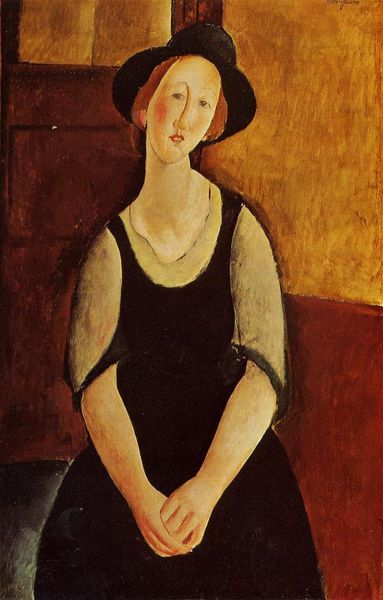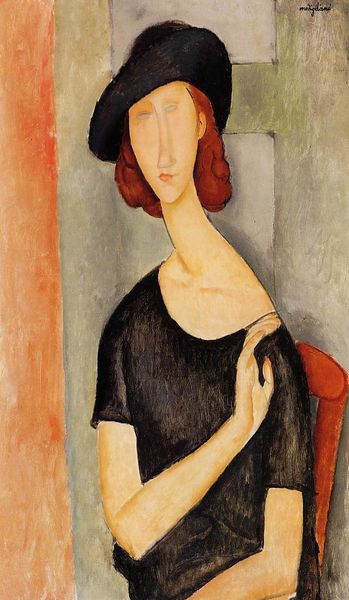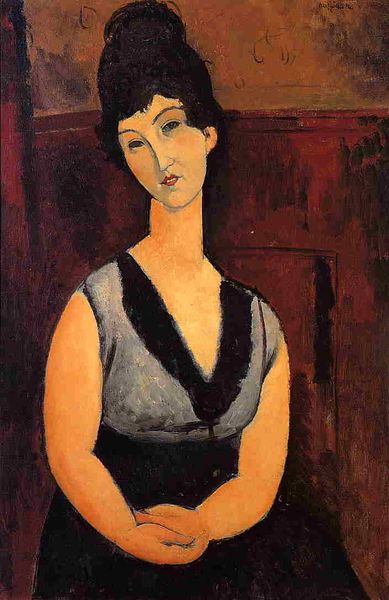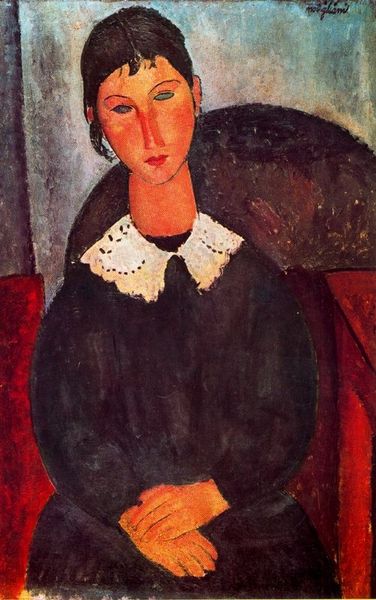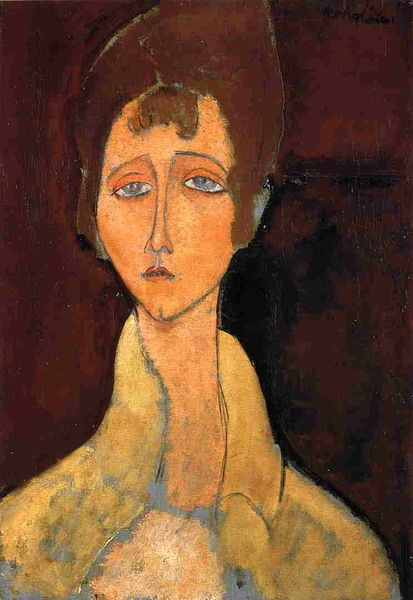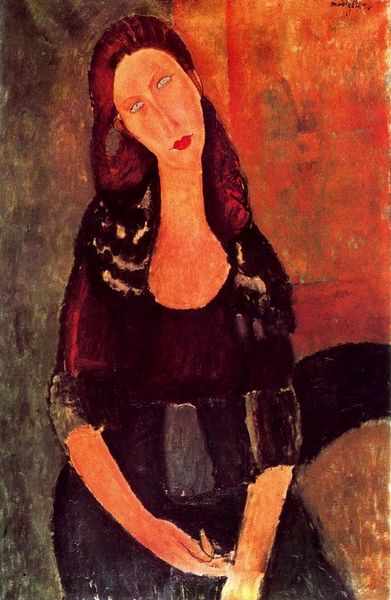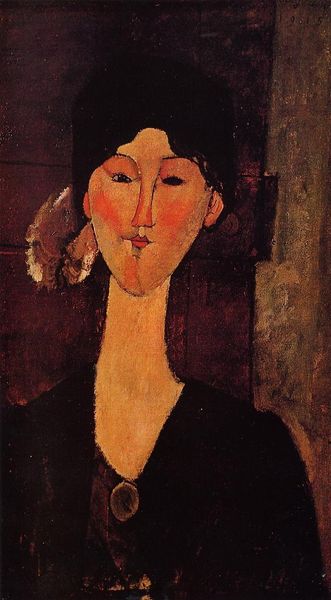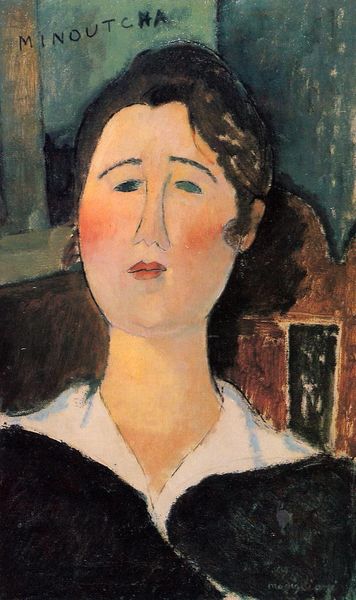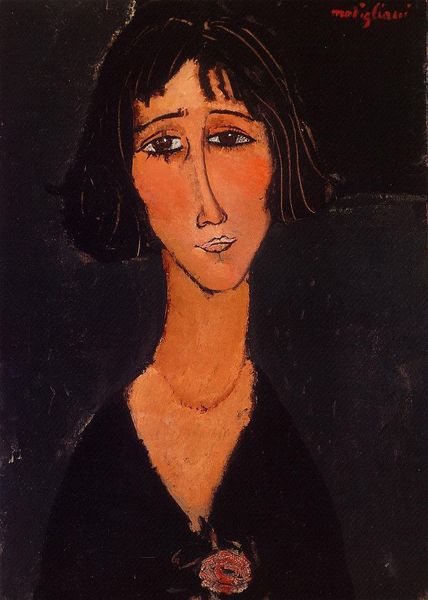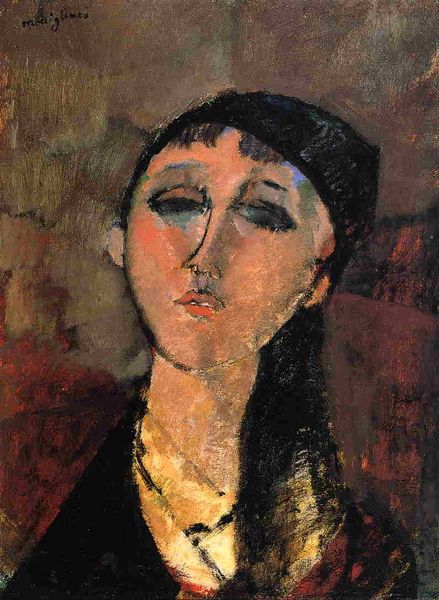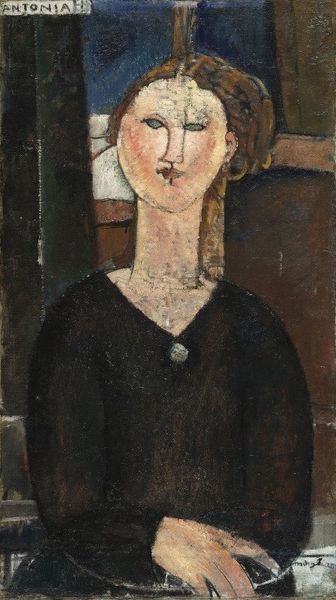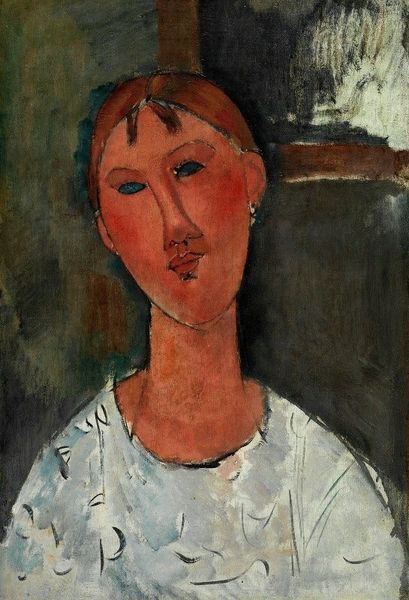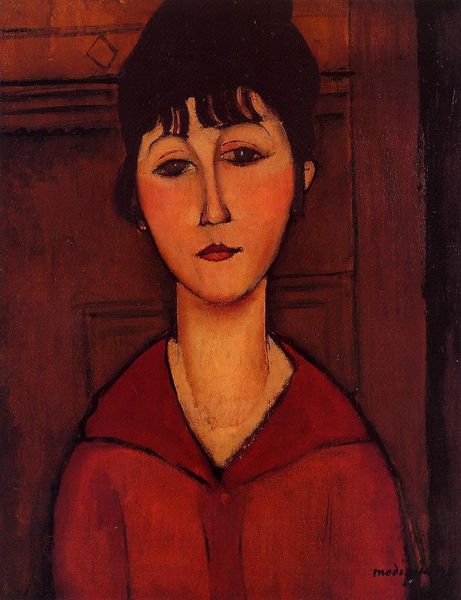
painting, oil-paint, impasto
#
portrait
#
painting
#
oil-paint
#
figuration
#
impasto
#
expressionism
#
italian-renaissance
#
modernism
Dimensions: 164.52 x 137.1 cm
Copyright: Public domain
Curator: Up next, we have Amedeo Modigliani’s “Jeanne Hébuterne with Hat and Necklace," painted in 1917. He was, of course, known for his elongated portraits. Editor: Immediately, the palette strikes me. Muted browns and blacks punctuated by those striking blue eyes; it’s undeniably melancholic, yet also quietly powerful. Curator: Modigliani had a specific and stylized approach to portraiture. The elongated neck, almond-shaped eyes, and simplified forms—hallmarks of his work. It shows the artist’s deep engagement with formal properties: line, shape and color. The influence of Brancusi's sculptures, is unmistakable. Editor: Beyond form, I see a depiction shaped by the socio-economic realities of Montparnasse. Hebuterne was, of course, Modigliani’s lover, but she was also his model; one must acknowledge the power dynamics and artistic milieu. Modigliani's career was tragically cut short; so there is a poignant connection with the cultural narrative of the time. Curator: The visible brushstrokes and textured surface also contribute. Look at the impasto technique, particularly around the hat and shoulders. The physicality of the paint is evident. Each brushstroke creates form, yes, but each one also is its own aesthetic intention. Editor: Absolutely. That heavy texture draws the viewer into the image. Consider that this portrait hangs among depictions of powerful men, landowners and merchants from earlier times, then remember how radical it was to depict a woman of the bohemian era at a similar scale; the social importance becomes clear. It speaks to modern art. Curator: But also consider the necklace—not just a decorative element, but a careful compositional device. The contrast between the rounded beads and sharp lines create a tension; an interplay which contributes greatly to the character’s presence within the painting. Editor: It serves as a symbol. Beyond that, a symbol of wealth, adornment or possibly status in an environment where conventions were evolving. So, is this woman really an accurate representation, or a fashionable performance of identity in a transient epoch? Curator: Indeed. A rich set of interlocking formal properties which continue to spark inquiry, more than a century after its creation. Editor: Indeed, reflecting the evolving cultural values evident in Modernism.
Comments
No comments
Be the first to comment and join the conversation on the ultimate creative platform.
